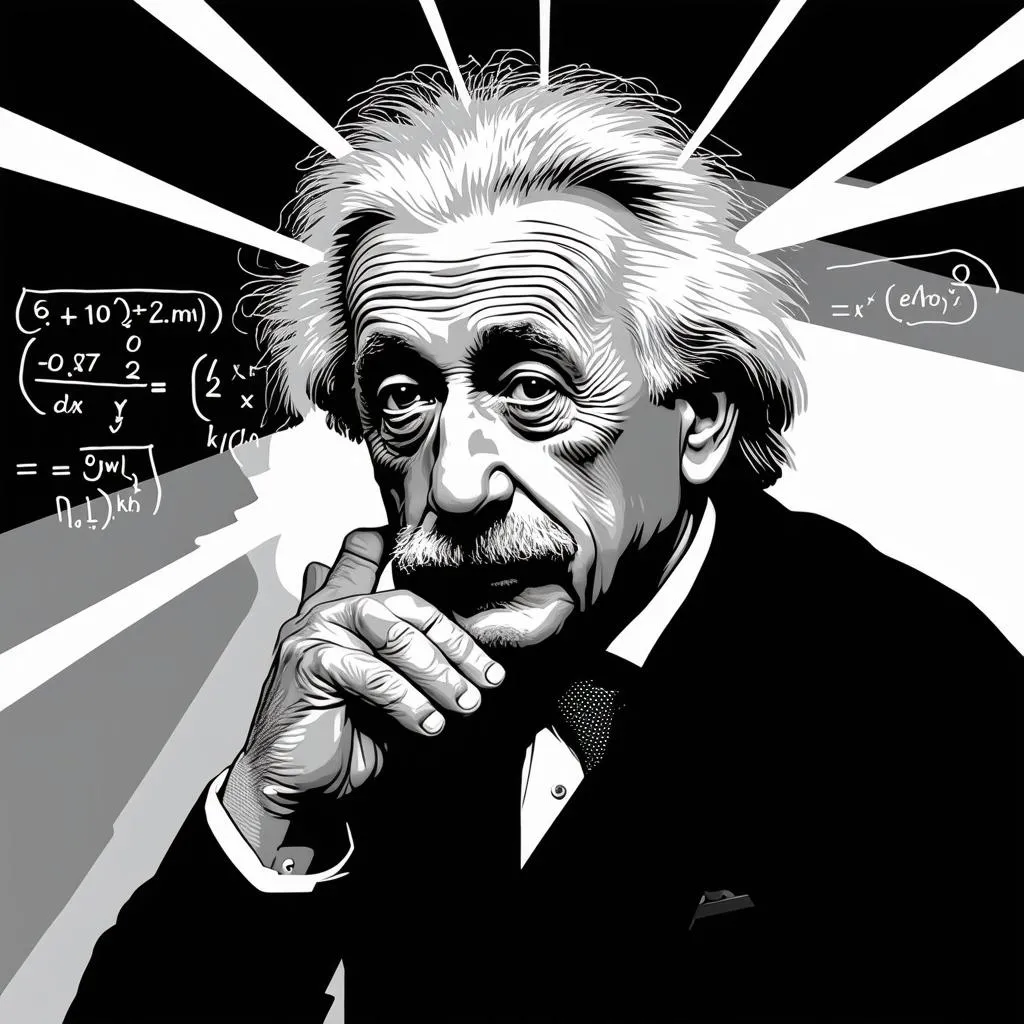Have you ever gazed at the stars on a clear night and wondered about the vast distances the light travels to reach us? Light, the very essence that allows us to perceive the world around us, holds a fascinating secret: its speed. But Does All Light Travel At The Same Speed?
Let’s embark on a journey to uncover the mysteries of light and its speed, and how it connects to the wonders of our universe.
The Universal Speed Limit: The Speed of Light in a Vacuum
In the vast emptiness of space, a vacuum where no air or matter exists, light travels at its maximum speed, a mind-boggling 299,792,458 meters per second (approximately 186,282 miles per second). This speed, often denoted by the letter ‘c’, is considered a fundamental constant in physics, meaning it remains unchanged throughout the universe.
Imagine standing on the observation deck of the Burj Khalifa in Dubai, watching a beam of light race across the sky. That light, unimpeded by any obstacles, would be traveling at this incredible speed.
Light Slows Down: The Influence of Different Mediums
However, light doesn’t always travel at this breakneck pace. When light passes through different mediums like air, water, or glass, it interacts with the atoms within those mediums. These interactions cause the light to slow down slightly.
Think of it like driving a car on a highway versus navigating a bustling city street. Just as traffic slows you down in a city, the denser a medium is, the more the light interacts with atoms, causing a decrease in its speed.
For instance, light travels slightly slower in the Earth’s atmosphere compared to the vacuum of space. This difference in speed is the reason why we observe breathtaking phenomena like rainbows. As sunlight passes through raindrops, the different colors of light are refracted, or bent, at slightly different angles, resulting in the beautiful arc of colors we admire.
Does the Color of Light Affect its Speed?
Interestingly, even though light slows down in different mediums, all colors of light travel at the same speed in a vacuum. This means that red light, blue light, and every color in between would reach your eyes simultaneously after a lightning strike, no matter how far away you are.
Exploring the Implications: Travel Time of Light
The immense speed of light has profound implications for our understanding of the universe. When we gaze at distant stars and galaxies, we are essentially looking back in time. The light from those celestial objects has taken millions, even billions, of years to reach our eyes.
For instance, the light from the Andromeda Galaxy, our closest galactic neighbor, takes a staggering 2.5 million years to travel to Earth. Observing such distant objects allows us to study the universe as it existed in the distant past.
 Light Traveling Through Space
Light Traveling Through Space
Feng Shui and the Importance of Light in Travel
In the realm of travel, light plays a significant role in Feng Shui, the ancient Chinese practice of harmonizing individuals with their surrounding environment.
Natural light is considered especially auspicious, symbolizing clarity, energy, and positive opportunities. When planning your travel itinerary, consider incorporating destinations and activities that allow you to bask in the natural light.
For example, a sunrise hike to the summit of Mount Fuji in Japan, or a sunset cruise along the canals of Amsterdam, not only offer breathtaking views but also infuse your journey with positive energy according to Feng Shui principles.
Frequently Asked Questions
Does gravity affect the speed of light?
While gravity can bend the path of light, it doesn’t affect its speed.
Is it possible to travel faster than light?
According to Einstein’s theory of relativity, nothing can travel faster than light in a vacuum.
How is the speed of light used in everyday life?
The speed of light is crucial for technologies like GPS, fiber optic communication, and even in medical imaging techniques like X-rays.
 Einstein Thinking About Light
Einstein Thinking About Light
Conclusion
The speed of light, a fundamental constant in our universe, governs how we perceive and interact with the world around us. While light’s speed may slightly vary in different mediums, its constant speed in a vacuum serves as a testament to the elegance and wonder of the laws of physics.
As you plan your next travel adventure, remember the incredible journey light undertakes to illuminate our world. Embrace the opportunity to witness the beauty of light in all its forms, from the vibrant colors of a tropical sunset to the star-studded skies above ancient ruins. Each experience is a reminder of the interconnectedness of our universe and the awe-inspiring power of light.
If you’re interested in learning more about light, travel, and the wonders of our universe, be sure to explore other insightful articles on TRAVELCAR.edu.vn, your trusted guide for enriching travel experiences.

